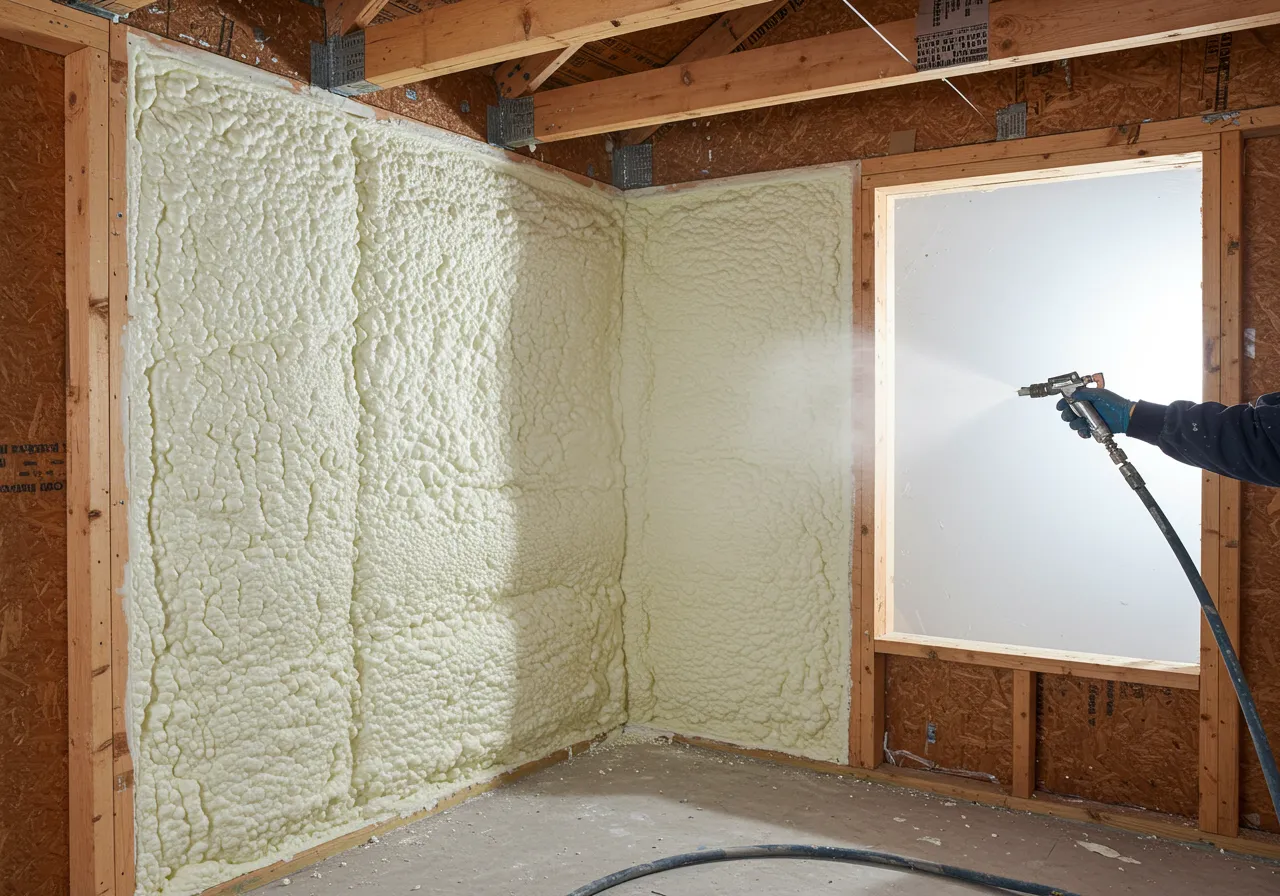
Spray foam insulation has been a popular choice for homeowners and businesses seeking energy efficiency. While it provides superior thermal resistance and air-sealing properties, its environmental impact remains a point of debate. As sustainability efforts grow, many are asking whether spray foam insulation aligns with eco-friendly standards in 2025.
Spray foam insulation is typically made from polyurethane, a petroleum-based material. It expands upon application, forming an airtight barrier that reduces energy loss. The key components influencing its environmental impact include:
One of the strongest arguments for spray foam insulation being eco-friendly is its contribution to energy savings. By creating a nearly airtight seal, it prevents heat loss in winter and heat gain in summer, leading to lower energy consumption. This, in turn, reduces greenhouse gas emissions from heating and cooling systems.
A well-insulated home using spray foam can see energy savings of up to 50%, significantly lowering carbon emissions over the product’s lifespan. However, the production process still carries an environmental cost due to the reliance on fossil fuel-derived components.
While spray foam offers excellent performance, it’s useful to compare its environmental impact to other common insulation types:
| Insulation Type | R-Value (Per Inch) | Eco-Friendliness Factors |
| Spray Foam (HFO-based) | 6-7 | High efficiency, moderate carbon footprint |
| Fiberglass | 2.5-4 | Made from recycled glass, lower energy efficiency |
| Cellulose | 3.5-4 | Composed of recycled paper, lower embodied carbon |
| Rock Wool | 3.5-4 | Non-combustible, made from natural materials |
While cellulose insulation has a lower initial carbon footprint due to its recycled content, it does not provide the same air-sealing properties as spray foam. Fiberglass and rock wool are more affordable but may require additional sealing measures to achieve the same energy performance.
A common concern with spray foam insulation is the release of volatile organic compounds (VOCs) during installation. However, advancements in manufacturing have led to low-VOC formulations, which reduce health risks. Proper installation and curing significantly minimize off-gassing, making it safer for indoor air quality.
Unlike fiberglass or cellulose, spray foam insulation is not easily recyclable. Once applied, it adheres permanently to surfaces, making removal difficult. Some initiatives explore chemical recycling methods to repurpose polyurethane materials, but widespread adoption remains limited.
Manufacturers are continuously improving spray foam formulations to align with environmental goals. Some key developments include:
If environmental impact is a primary concern, consider factors such as energy efficiency, material composition, and long-term performance when selecting insulation. Spray foam remains a strong contender due to its ability to minimize energy waste, even if its raw material sourcing and recyclability present challenges.
Spray Tech Solutions specializes in high-performance insulation solutions. Our team provides expert consultations to help you choose the right materials for your project while balancing energy efficiency and environmental considerations. Contact us at (765) 480-8200 or email [email protected] for personalized recommendations.
Yes, when installed correctly, modern spray foam formulations have low VOC emissions and do not pose significant health risks. Proper ventilation during installation is key to ensuring safety.
Spray foam can last 50 years or more when properly installed, making it a long-term solution for energy efficiency.
Many spray foam products meet the criteria for tax incentives and rebates. Check with local energy programs to determine eligibility.
Removing spray foam is difficult and often requires professional assistance. It is not as easily recyclable as other insulation types.
Spray foam is typically more expensive upfront than fiberglass, but the long-term energy savings often justify the investment.
Yes, some newer formulations use bio-based materials and lower-impact blowing agents, making them more sustainable than conventional options.
No, spray foam does not provide a food source for pests or support mold growth, making it a reliable choice for long-term durability.
The ideal R-value depends on your climate zone. Higher R-values offer better insulation, but regional energy codes should guide your choice.
Professional installation is recommended to ensure proper application and avoid common issues like off-gassing or improper sealing.
Spray foam insulation remains an effective solution for reducing energy consumption. While it has some environmental challenges, continued innovations make it a viable option for those prioritizing efficiency and sustainability. For expert advice and installation, reach out to Spray Tech Solutions at (765) 480-8200 or [email protected].